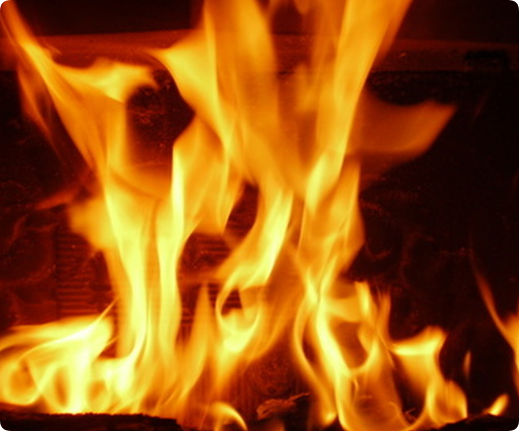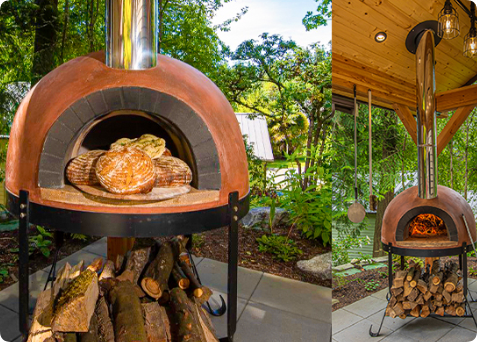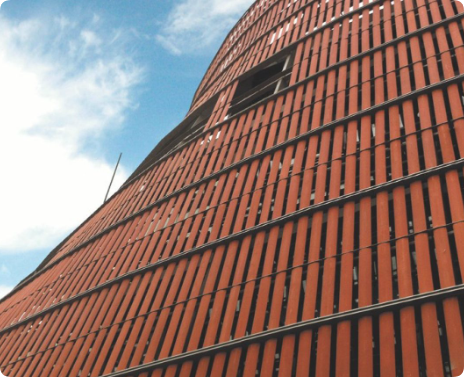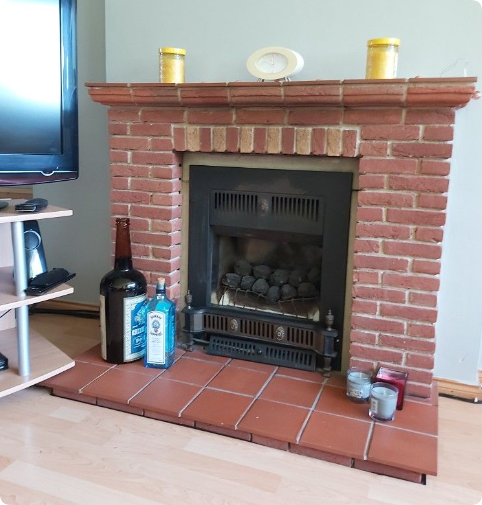Terracotta, known for its warm, earthy tones and rustic appeal, has been used for centuries in various applications, from pottery and sculptures to architectural elements and cooking vessels. But when it comes to fire resistance, many people wonder: Is terracotta fireproof? As a ceramic flower pot manufacturer, Hale Planter is well-positioned to provide a detailed, professional analysis of terracotta’s fireproof qualities, its limitations, and its suitability for high-temperature environments.
In this blog post, we will explore the science behind terracotta, including its raw materials and production process, assess its fire resistance, and present market case studies to understand how this material is perceived by users in various industries. By the end of this article, you’ll have a clear understanding of whether terracotta is truly fireproof and how it can be used safely in environments where fire and heat are concerns.
What Is Terracotta?
Terracotta, derived from the Italian word for “baked earth,” refers to a type of earthenware clay that is typically brownish-red in color. It has been used for thousands of years due to its versatility and affordability. The raw materials for terracotta consist primarily of natural clay, which is shaped into various forms and fired at relatively low temperatures in a kiln, usually around 1000°C (1832°F). This firing process hardens the clay, making it durable, porous, and suitable for a range of applications, including flower pots, tiles, sculptures, and even building materials.
The Fire Resistance of Terracotta: A Technical Overview
To determine whether terracotta is fireproof, we need to delve into its composition and the properties that arise from its production process.
- Clay Composition
- Terracotta is made from natural clay that contains various minerals, including silica, alumina, and iron oxide. These elements contribute to its characteristic red or orange color. However, it’s the silica content that plays a crucial role in determining terracotta’s behavior in high-heat environments.
- Porosity
- Unlike other ceramics that are vitrified (made glass-like through high-temperature firing), terracotta remains porous after firing. This means that water can pass through its surface, which is why terracotta pots are great for plant growth. However, this porosity also means that terracotta is not as dense as materials like stoneware or porcelain, which are fired at much higher temperatures.
- Thermal Conductivity
- Terracotta has relatively low thermal conductivity compared to metals or glass. This means it doesn’t transfer heat as quickly, which can provide some protection in high-heat situations. However, its fire resistance is limited by its ability to retain structural integrity under intense heat.
- Thermal Expansion and Cracking
- When exposed to rapid temperature changes, terracotta can crack due to thermal expansion. The material expands when heated and contracts when cooled, which can cause stress fractures in the pottery. This is a key reason why terracotta is not considered entirely fireproof in situations where sudden, extreme heat is involved.
Is Terracotta Fireproof?
The term “fireproof” implies that a material can withstand fire or extreme heat without being damaged. In the case of terracotta, the answer is nuanced:

- Fire Resistance: Terracotta can withstand moderate levels of heat, and it’s often used in fireplaces, kilns, and pizza ovens, where it is exposed to high temperatures but not direct flames. Its low thermal conductivity helps protect it from overheating too quickly.
- Fireproof: Terracotta is not entirely fireproof. When exposed to extremely high temperatures, such as those found in a fire, terracotta can crack, break, or even explode due to its porous nature and the presence of water vapor trapped inside the material. While it may not combust or melt, it is not immune to heat-induced damage.
Why You Shouldn’t Use Terracotta Pots for Fire
Applications of Terracotta in Fire-Exposed Environments
Despite its limitations in being fully fireproof, terracotta remains a popular choice for several high-heat applications due to its heat resistance and aesthetic appeal. Let’s look at some of the common uses of terracotta in environments where fire and heat are a concern.
- Fireplaces and Hearths
- Terracotta tiles and bricks are often used in fireplaces and hearths because they can tolerate the radiant heat from a fire. However, they are usually placed in areas that are somewhat shielded from direct flames. Their earthy colors add a rustic charm to interior spaces while providing reasonable heat resistance.
- Outdoor Fire Pits
- Some outdoor fire pits are designed with terracotta components, typically as decorative elements or support structures rather than as the primary material. Again, terracotta is valued for its ability to absorb and radiate heat, though it is not exposed to the full intensity of the fire.
- Pizza Ovens
- Terracotta has been used historically in pizza ovens and other cooking vessels that require high, sustained heat. Its ability to withstand temperatures of around 1000°C makes it suitable for these applications. However, modern pizza ovens often use higher-grade fireproof materials like refractory bricks to avoid the risk of cracking.
- Roofing and Architectural Features
- In architecture, terracotta is commonly used for roof tiles and decorative elements on buildings. While not designed to resist fire directly, terracotta tiles can provide some level of protection against external fires, as they do not burn and can act as a barrier. However, they can crack or shatter under extreme heat.
Does terracotta clay need to be fired?
Production Process and Its Impact on Fire Resistance
The production process of terracotta plays a critical role in determining its fire resistance. As a ceramic flower pot manufacturer, Hale Planter understands how variations in raw materials, firing temperatures, and finishing techniques can affect the final product’s durability.
- Firing Temperature
- The firing temperature for terracotta is lower than that for stoneware or porcelain. While this makes it easier and cheaper to produce, it also means that the material doesn’t undergo the same level of vitrification, leaving it more porous and less heat-resistant.
- Kiln Atmosphere
- The atmosphere inside the kiln, whether oxygen-rich or oxygen-poor, can also influence the strength and durability of terracotta. For example, a reduction atmosphere can enhance the material’s structural integrity, but it doesn’t make terracotta completely fireproof.
- Glazing
- Some terracotta products are glazed to improve their appearance and functionality. While glazing can offer some protection against moisture and enhance the fire resistance of terracotta, it doesn’t eliminate the risk of cracking or breaking under extreme heat. Glazed terracotta may perform slightly better in high-heat environments, but it is still not fully fireproof.
Case Studies: User Experiences with Terracotta in Heat-Intensive Settings
To better understand terracotta’s performance in real-world scenarios, let’s explore some case studies of how this material is used in fire-exposed environments.
1.Terracotta in Outdoor Kitchens
- In Mediterranean countries, outdoor kitchens often incorporate terracotta for countertops, oven exteriors, and other structural elements. While these outdoor kitchens are regularly exposed to heat, users report that terracotta’s heat resistance is sufficient for cooking and entertaining. However, caution is always taken to avoid direct exposure to flames, as cracks and breakage can occur.

2.Architectural Preservation
- Many historical buildings feature terracotta elements that have withstood centuries of environmental exposure, including heat from nearby fires. Preservationists note that while terracotta can survive in high-heat settings, extreme fire events can cause significant damage, requiring restoration or replacement.

3.Residential Use of Terracotta Fireplaces
- In modern homes, terracotta tiles are frequently used for fireplace surrounds. Users find that the material holds up well under indirect heat, although some have reported minor cracking after years of exposure to fluctuating temperatures. These instances highlight terracotta’s moderate fire resistance but also underscore its susceptibility to damage over time.

Comparing Terracotta to Other Fire-Resistant Materials
Terracotta is often compared to other ceramics and materials in terms of its fire resistance. Here’s how it stacks up against some common alternatives:
- Refractory Bricks
- Refractory bricks, also known as fire bricks, are designed specifically for high-heat environments. They are fired at much higher temperatures than terracotta and are capable of withstanding direct exposure to flames without cracking or breaking. If fireproofing is a primary concern, refractory bricks are a superior choice.
- Stoneware and Porcelain
- Stoneware and porcelain are both fired at higher temperatures than terracotta, resulting in a denser, more vitrified material. This makes them more resistant to heat and fire damage, though they are still not completely fireproof.
- Concrete
- Concrete is another material commonly used in fire-exposed environments, especially in construction. It offers good fire resistance but lacks the aesthetic appeal of terracotta. Concrete can also crack under extreme heat, though it is less likely to shatter explosively compared to terracotta.
Conclusion: Is Terracotta Right for Fire-Exposed Applications?
Terracotta offers moderate fire resistance, making it suitable for certain high-heat environments such as fireplaces, pizza ovens, and architectural elements. However, it is not entirely fireproof and may crack or break under direct flame or extreme temperature fluctuations. Understanding terracotta’s limitations is key to using it safely in environments where fire and heat are concerns.
At Hale Planter, we value the natural beauty and versatility of terracotta. Our terracotta flower pots are designed to thrive in everyday environments, offering excellent breathability for plants and a timeless aesthetic for your home or garden. However, we always recommend using terracotta in appropriate settings where its fire resistance can be fully appreciated without risking damage from extreme heat.
Whether you’re a homeowner, an architect, or a garden enthusiast, terracotta’s natural warmth and charm make it a valuable addition to any space, but understanding its fire resistance properties is crucial to ensuring safety and longevity.
Final Thoughts: Balancing Aesthetics and Functionality
When selecting materials for environments that may involve exposure to heat or fire, terracotta provides a unique balance of aesthetics and functionality. While it is not entirely fireproof, its ability to resist moderate heat makes it suitable for many practical applications, particularly in areas where direct flames or extreme temperatures are not a constant concern. Its rustic appeal, combined with its natural insulating properties, allows it to enhance the beauty of spaces like outdoor kitchens, fireplaces, and architectural features.
For consumers, designers, and contractors, the decision to use terracotta should be based on the specific requirements of the project. In situations where higher fire resistance is needed, alternative materials like refractory bricks or stoneware may be more suitable. However, for everyday use and decorative purposes, terracotta continues to be a timeless material that adds character and warmth to any environment.
At Hale Planter, we take pride in our wide range of terracotta flower pots, designed not only to meet functional gardening needs but also to offer a touch of elegance to your outdoor or indoor spaces. While our terracotta pots are not fireproof, they are crafted with care to provide durability, breathability, and a classic aesthetic that complements any plant collection.
If you’re looking to explore more about terracotta products or need guidance on the best materials for your home and garden, feel free to browse our collection at www.haleplanter.com or contact our team of experts. We are here to help you make informed choices that combine style, functionality, and safety for all your gardening and decorative needs.
In summary, while terracotta is not fireproof in the strictest sense, it remains a durable and attractive option for many applications that involve heat, provided it is used within its limitations. Understanding its fire-resistant properties can help you make the best decisions for your home and garden, whether you’re building a cozy fireplace, an outdoor cooking area, or simply choosing the right pots for your plants.

